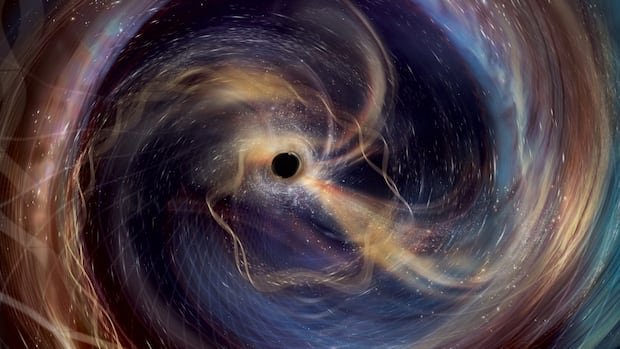Renowned theoretical physicist Stephen Hawking and Albert Einstein have once again been vindicated by recent discoveries. Scientists from the U.S. National Science Foundation’s Laser Interferometer Gravitational-wave Observatory (LIGO) have detected a gravitational wave, a distortion in the fabric of space-time resulting from powerful cosmic events like the collision of black holes or neutron stars.
The gravitational wave observed originated from the merger of two black holes located approximately 1.3 billion light years away from Earth. These black holes, each about 30 times more massive than the sun, combined to form a new black hole known as GW250114. This event marks one of nearly 300 such violent encounters detected by the LIGO observatories in Hanford, Washington and Livingston, Louisiana.
The collision of these black holes produced distinct tones, a phenomenon referred to as “ringing,” confirming a prediction made by mathematician Roy Kerr in 1963. The tones observed matched, supporting the Kerr solution which suggests that a black hole can be defined solely by its mass and spin properties.
The merger also validated Einstein’s theory of general relativity regarding black holes and Kerr’s calculations related to spinning black holes. Additionally, the event confirmed Hawking’s area theorem, demonstrating that the event horizon of a black hole, the area from which no light can escape, only increases in size when two black holes merge.
Despite the increase in the black hole’s surface area, its mass decreased post-merger, in line with theoretical expectations. The gravitational waves produced by the collision provided substantial evidence supporting long-standing predictions by prominent physicists.
The recent discovery provided stronger evidence compared to previous detections of black hole mergers, showcasing the progress in gravitational wave research. The findings offer valuable insights into the behavior of black holes and the nature of gravitational waves, aligning with the theories proposed by Hawking, Einstein, and Kerr.
Looking ahead, researchers are optimistic about the future advancements in detector technology that will enhance their ability to uncover more mysteries of the universe. The continuous validation of theoretical predictions through empirical evidence demonstrates the remarkable progress in astrophysical research facilitated by cutting-edge technology and collaborative efforts among scientific communities.

